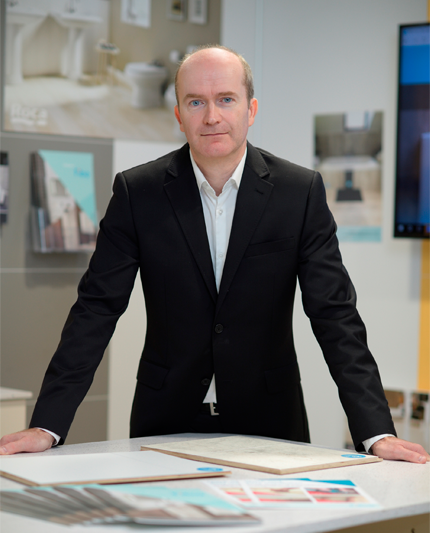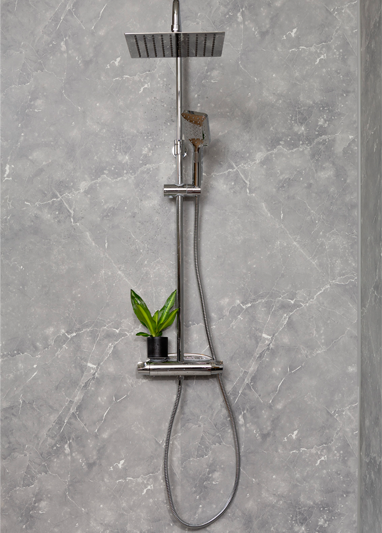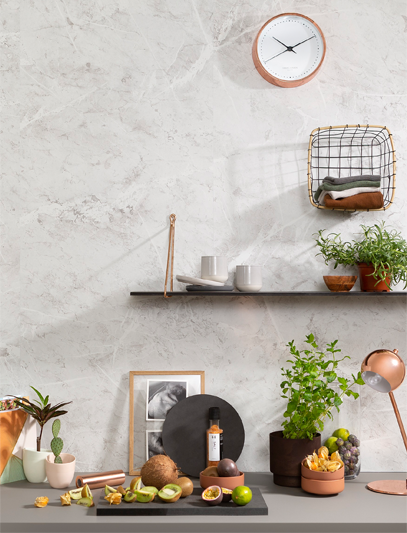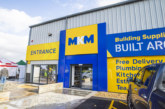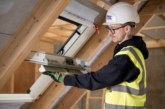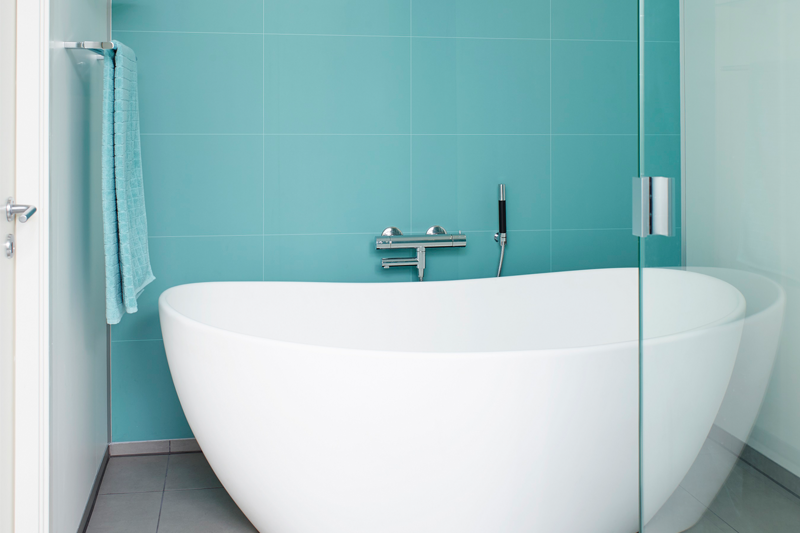
Scott Beattie, Managing Director of Fibo UK, argues that growth in the wall panel market is outstripping the traditional tile sector and outlines the opportunities this presents for merchants.
Despite some Brexit-related uncertainty, the housing market continues to perform relatively well. There is huge demand for new housing and the government is committed to delivering 300,000 homes a year by the mid-2020s. It’s anticipated, however, that this still won’t meet the need.
Furthermore, multigenerational living is on the rise with children returning home after university and grandparents moving in. As a consequence, both the housing shortage and extended families living together are driving the trend for existing households to extend, and to improve rather than move.
When it comes to bathroom and kitchen refurbishments, homeowners are looking for practical, stylish designs. Fully tiled bathrooms and wetrooms, for example, are increasingly popular in all types of homes, from social housing to ‘Grand Designs’. It seems waterproof wall panels are taking the lion’s share of this market, showing strong growth and out-performing traditional tiles.
Indeed, according to research in 2018, the market for wall panels — including splashbacks — was worth an estimated £60-70m. The market has seen double digit growth since 2016, escalating in 2017 and 2018 and is expected to continue to grow in 2019.
The overall tile market, however, is expected to remain flat in 2019 — at least in value — although in the medium term it is inevitable that both distributor and retail prices will need to increase to reflect recent rises in raw material costs. The waterproof panel market, however, is expected to see growth in excess of 10% in the year and it is likely that panels will continue to take market share.
We believe the increasing demand for wall panels is underpinned by a number of positive developments in this product sector, combined with the natural advantages of installing a panel system over ceramic tiles.
Easy and quick to install
Investment in areas of product design means panels are up to five times quicker to install than tiles and with a tongue and groove system, a single worker can complete a bathroom or kitchen in a day. Panels are easyto install too — they can be fitted by any competent builder or even a skilled DIYer, removing the need for skilled labour.
Another significant advantage for builders and installers is that most modern panels can be fixed to existing tiles, stud partitioning or over virtually any kind of surface without the need to re-plaster. If existing tiles have to be removed it’s likely the wall beneath will not be in great condition, so there can be a wait to find a plasterer who is available to do the job. Then there is another delay while the new plaster dries. Then, a tiler is required to fix and grout the new tiles.
We all know there is a serious skills shortage in the construction industry, so waiting for plasterers and tilers (and paying for their skills) adds to project delays and costs.
Fit and forget
Panels are generally guaranteed for 10-15 years when installed according to manufacturer’s instructions. Beyond this timeframe, we are aware of projects where Fibo panels are still looking good and performing well after 25 years. And they’re easy to maintain too — a simple wipe-down is all it takes to keep panels clean and looking good.
If a homeowner wants the look of classic ceramic tiles, panels are available with a 3D routed ‘grouting’ line, but without the problems that can be associated with grout, such as discolouring, crumbling, mildew or mould — a problem with tiles that can be difficult to cure, even with the use of strong chemicals.
Style to suit
A much wider choice in colours, styles and textures also means that today’s panels are making a significant contribution to bathroom and kitchen design. The options now extend to marble finishes, bright colours, metallic shades and designer ranges, with contrasting inserts and tile-effect finishes.
In addition, it is a simple matter to attach accessories. Modern high-performance wall panels are constructed to higher specifications, with a multi-layer plywood core. This means there’sno risk of cracking or shattering, so drilling a hole to fix lightweight items is a straight-forward process, while heavier items such as washbasins, towel rails or support handles for people with mobility issues can be secured to the wall through the panel.
“It seems waterproof wall panels are taking the lion’s share of this market, showing strong growth and out-performing traditional tiles.”
Once seen as an inexpensive product aimed at the lower end of the housing market, high performance panels are now a practical, stylish and versatile solution for a wide range of projects — large or small — and very much on-trend for commercial, public and private domestic use.
With improved designs, ease of installation, more choice and better overall awareness and understanding of the benefits of waterproof panels over traditional tiles, it’s an open door for builders’ merchants to take advantage of a strongly growing market.
For more information on Fibo’s range of products, visit https://fibo.co.uk/wp-content/uploads/2019/05/FIBO-Brochure-Web.pdf

